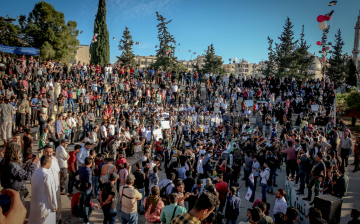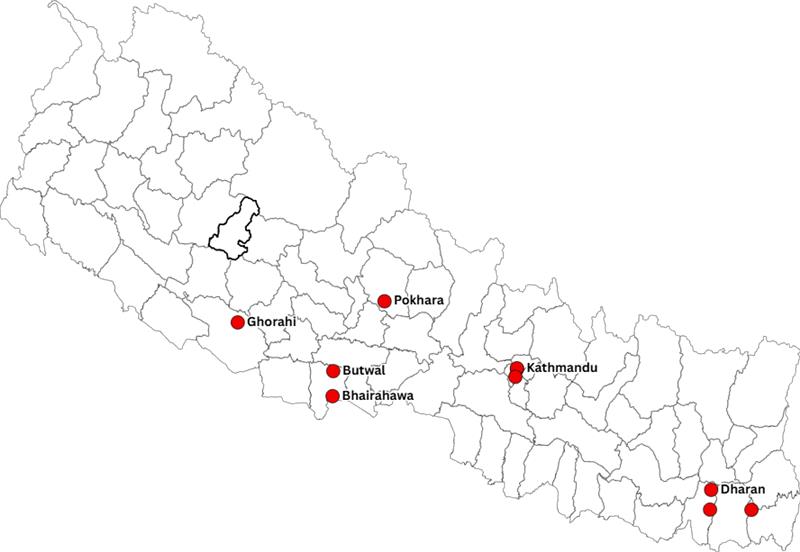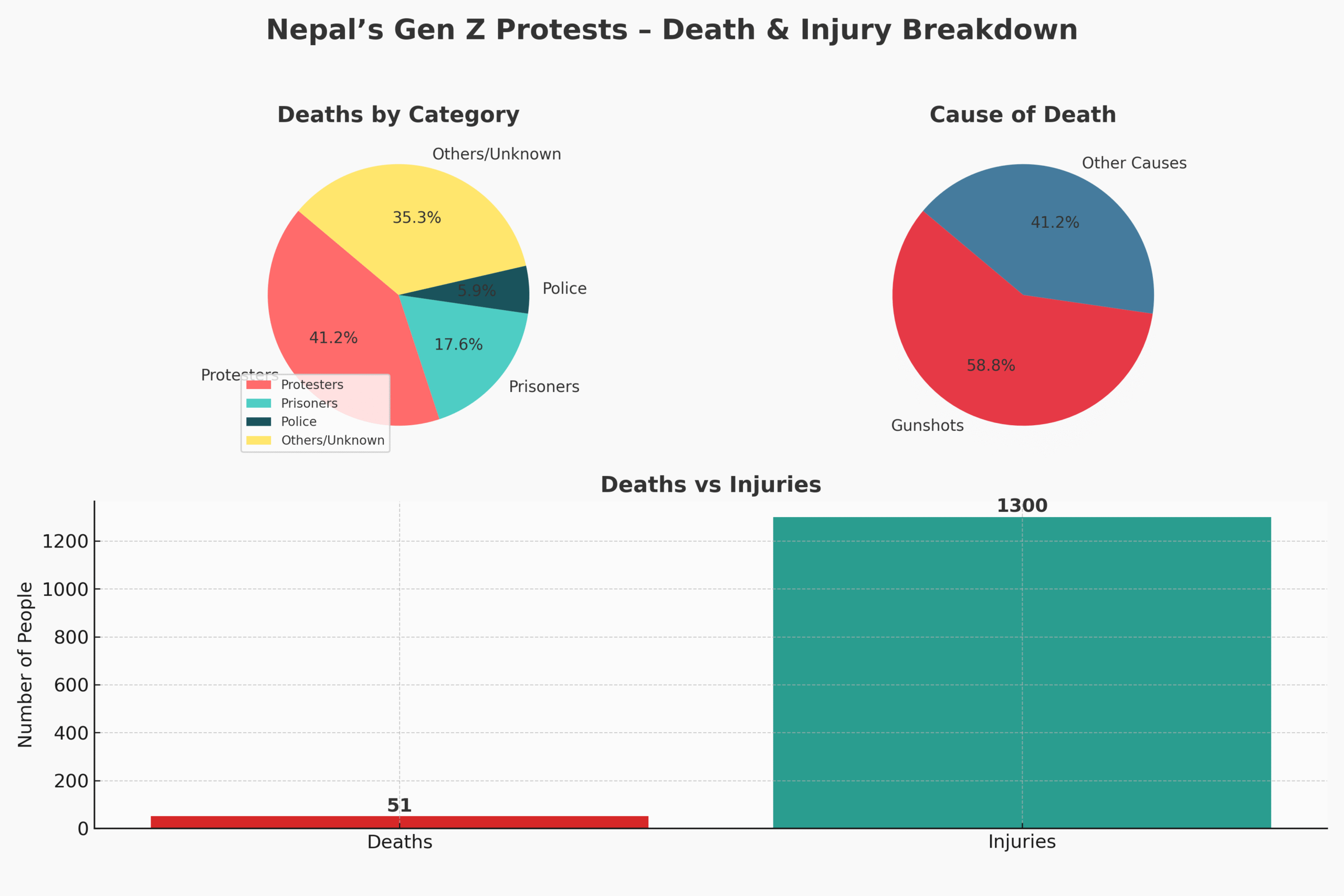
Nepal’s Gen Z Protests: A New Perspective on Risk and Resilience
Nepal’s Gen Z Protests: A New Perspective on Risk and Resilience
In September 2025, Nepal’s government shut down 26 popular social media platforms, including Facebook, X, YouTube, and LinkedIn. Officially, the platforms had not registered under new rules aimed at taxing foreign online services. These regulations were intended to boost revenue through a Digital Services Tax and stricter value-added tax rules.
Many people, however, believe the shutdown aimed to silence criticism of political leaders and their families. The criticism gained momentum through the “Nepo Kid” trend, exposing wealth and privilege among politicians’ children while average citizens earn roughly USD 1,400 annually. With nearly half of Nepal’s population using social media—and a median age of 25—young people led the protests. High unemployment, at 20% for youth, and heavy dependence on remittances, making up 33% of GDP, further fuelled public frustration. Social media is not just entertainment—it is crucial for jobs, communication, and raising civic concerns.
Why Nepal’s Gen Z Protests Matter
Nepal’s young generation protested beyond the social media ban. Key issues include:
- Corruption and misuse of funds: Cases like the 2017 Airbus deal caused huge losses for the state airline. Investigations by the Commission for the Investigation of Abuse of Authority (CIAA) resulted in convictions, highlighting corruption.
- Nepotism and inequality: The term “nepo babies” exposed lavish lifestyles of political families—designer clothes, luxury cars, and expensive homes—contrasted with ordinary citizens’ struggles. Nepal’s prime minister earns less than ₹65,000 monthly, while politicians’ families hold millions in wealth.
- Economic hardship and unemployment: Nearly 5,000 young Nepalis leave daily to work abroad due to limited jobs. Youth unemployment is around 20%, and remittances form a significant part of the economy.
- Political instability: No prime minister has completed a full five-year term in over two decades, contributing to distrust and public frustration.
- Grassroots coordination: The protests, mainly led by under-30s, were organised by Hami Nepal, a youth-focused non-profit. Students gathered in school uniforms, and the movement was not tied to any political party. Even Kathmandu’s mayor, elected via social media, supported the protests.
- Misrepresentation in media: Some outlets mislabelled the movement as social media addiction, ignoring deeper causes like corruption, nepotism, and inequality.
These protests reflect long-term governance failures, economic inequality, and lack of opportunities. They signal a broader call for accountability, fairness, and reform. With youth forming a large population segment, their voice highlights urgent national issues.
The Role of Social Media in Mobilising Gen Z Voices
Social media platforms like Discord became key spaces for over 100,000 youth to discuss and make decisions collectively.
- Decentralised organisation: Platforms allowed coordination without central leadership, fostering grassroots movements.
- Viral campaigns: Hashtags like #NepoBabies highlighted disparities between elites and ordinary citizens, amplifying calls for accountability.
- Global attention: Media coverage attracted international focus on Nepal’s political unrest.
- Youth empowerment: Social media enabled young Nepalis to challenge political structures and advocate change.
Digital tools helped Gen Z respond immediately to policy changes and demand broader reforms and transparency.
Hotspots of the Nepal Gen Z Protests

Key Challenges Highlighted by the Nepal Protests
The Nepal protests revealed deep social, economic, and political issues. Young citizens expressed frustration over inequality, corruption, lack of jobs, and weak governance. These challenges highlight the urgent need for accountability and systemic reform.
Economic Inequality: A large gap exists between wealthy political families and ordinary citizens, creating resentment among the population.
Unemployment and Low Salaries: Many young people struggle to find jobs or earn decent wages, forcing families to rely on remittances from abroad.
Corruption and Nepotism: Government corruption, favouritism, and misuse of public funds have eroded citizens’ trust in leaders.
Social Media Restrictions: The ban on social media was seen as a tool to silence public voices, further angering citizens.
Political Instability: Nepal has frequent changes in government, coalition conflicts, and unstable leadership, which undermines policy continuity.
Weak Governance: Bureaucratic inefficiency, delayed federalism, and centralised power reduce effective governance.
Electoral Manipulation: Vote-buying, electoral fraud, and unstable coalitions have weakened public faith in democracy.
Foreign Influence: Nepal faces pressures from neighbouring countries, affecting sovereignty and political decision-making.
Risk Management Lessons from Nepal’s Gen Z Movement
The movement began after a government ban on 26 social media platforms, including Facebook and YouTube. This was perceived as an attempt to suppress dissent. Combined with long-standing grievances over corruption and economic inequality, it led to widespread unrest.
Key Risk Management Insights
- Proactive Engagement: Ignoring public sentiment and avoiding youth engagement can escalate tensions
- Transparency: Lack of openness in governance and policies erodes trust and fuels unrest
- Communication: Restricting channels like social media can backfire and amplify dissent
- Accountability: Failing to address corruption and nepotism undermines credibility and legitimacy.
Building Resilience: How Governments Can Respond Better
Over 3,200 young Nepalis are debating reforms online, including early elections, term limits for prime ministers, and more accountable governance. The Nepali army and political leaders, including President Paudel, have called for dialogue to address these issues.
Key Considerations for Effective Government Response
- Engage in Transparent Dialogue: Open communication with youth and civil society helps understand grievances.
- Ensure Accountability: Investigate corruption and misuse of funds to rebuild public trust
- Institutional Reforms: Strengthen democratic institutions, ensure judicial independence, and improve legislation
- Address Youth Concerns: Policies on term limits and parliamentary tenure should align with protestor demands
- Promote Public Safety and Rights: Balance security measures with human rights protections.
What Businesses and Leaders Can Learn from Gen Z Protests
The Gen Z protests provide valuable lessons for businesses and leaders. Young people show how to use digital tools, demand fairness, and hold systems accountable.
Key Takeaways:
- Transparency: Young people expect openness; hiding information quickly erodes trust.
- Accountability: Leaders are judged by their actions and follow-through on promises.
- Innovation: Creative digital solutions can mobilise people and spread messages effectively.
- Inclusivity: Consider diverse voices and perspectives in decision-making.
- Adaptability: Respond quickly to changing situations and communicate in new ways.
- Integrity: Fair rules and ethical behaviour build trust
- Well-being: Leaders should balance work with mental health and personal needs.
- Responsibility: Those in power must own the consequences of their actions.
- Engagement: Actively involve communities and employees in meaningful discussions.
The Future of Risk and Resilience in Nepal with Gen Z at the Core
Nepal’s Gen Z is showing that activism can drive real change in communities. They strengthen risk awareness, resilience, and preparedness locally.
Key Actions:
- Turning Global Tools Local: Disaster risk tools have been made accessible in Nepali, engaging communities.
- Building Technical Skills: GIS mapping, drones, and hazard analysis help tackle climate and environmental risks.
- Community-Led Action: Local committees link households with officials to ensure participation.
- Innovative Solutions: Insurance and disaster financing pilots support vulnerable groups.
- Education and Awareness: Schools and neighbourhoods receive training and preparedness workshops.
- Youth Leadership: Programs like Youth Empowerment in DRR train young people in emergency response.
By placing youth at the heart of resilience, Gen Z shows that energy, creativity, and accountability from protests can transform governance and community safety in Nepal.

Conclusion – Gen Z as Drivers of Change and Preparedness
The demonstrations show that Generation Z is a strong force for change and accountability. Their activism builds community resilience and highlights inclusivity, creativity, and responsibility. Gen Z is helping society rethink governance, risk preparation, and disaster response.
Prospective professionals can learn from these lessons. Institutions like the Global Risk Management Institute (GRMI) provide practical training to evaluate risks, handle emergencies, and build resilient organisations. Just as Gen Z is shaping Nepal’s future, GRMI equips learners to take meaningful action in risk management and resilience.
You may also like
Cyber Security Certification Course: A Smart Investment for Your Career

How to Apply for a Post Graduate Degree Programme in India


